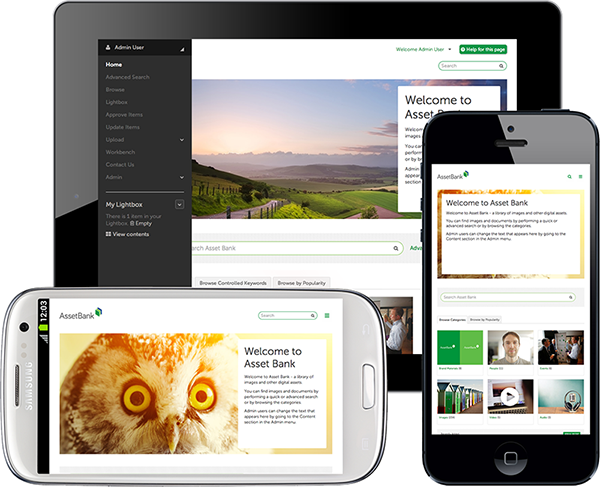- Buy or rent a DAM application that works out-of-the-box but that can be configured or customised to meet your particular requirements. The DAM vendor should able to provide consultancy to analyse your requirements and then propose a good fit solution. Take out free trials so you can properly evaluate the options.
- Manage the DAM application internally i.e. don't outsource its administration.
- Have at least one employee who is a champion for the library, i.e. who is responsible for administrating it and maintaining its on-going quality. In a large, global organisation this could be a full-time job.
- Understand that the successful implementation of a DAM application requires much more than just choosing the right software. Processes and policies need to be in place, for example: what are the work-flows for uploading, tagging, approving uploads, approving downloads? Would you benefit from a structured taxonomy, or is a ‘free for all’ approach to key-wording OK? These may require big changes to the way people work.
- Make sure users want to use it. A DAM application will solve a lot of problems that brand guardians know exist without it - however, these problems might not be immediately apparent to an employee (unless they previously got into trouble!). The end users need to see the benefits themselves - for example: 24x7 access to a wealth of previously unfindable material, clear usage rights that are therefore easy to adhere to, collaboration and sharing with other employees and useful tools (e.g. a PowerPoint presentation builder).
- Ensure that the application is more than just a repository of assets. It should be a 'brand hub' - the place to come to find brand materials, obviously, but also to read guidelines and rules on how these should be used, to see examples of best practice and success stories, to have discussions, add comments and ratings to assets, etc. The more engaged your users feel with the library the more they will use it.
- Make it easy for users to use it. Choose an intuitive DAM application that was designed with usability in mind. For example the end-users should be able to find and download assets without the need for training. It should support SSO (Single Sign-On) so that your users don't need to keep signing in.
- Make sure users have to use it - close down other routes for them to find digital assets. Find all those images scattered across network drives, migrate them into your DAM application and then delete them from the network.
- Ensure that the solution you choose can be branded so that it fits seamlessly with your Intranet or website. This will be your brand hub, so it needs to look the part.
- Consider the interoperability of the DAM application, to ensure it can be used with existing and future applications used in your organisation. For example, seamless integration with your Content Management System is obvious, but what about other internal applications that may want to use digital assets? Does the DAM software provide an API (Application Programming Interface)?
- Keep the library up-to-date and relevant. Too many organisations run a successful project to implement a DAM application but then lose focus once that project has finished. The library's content needs to be continually updated, and you should choose a DAM application that will evolve as technology and ideas do.
If you have any feedback or questions then please get in touch: feedback@bright-interactive.co.uk. If you have any other tips, please post these in the comments section below.
Thanks, Martin Wilson.



